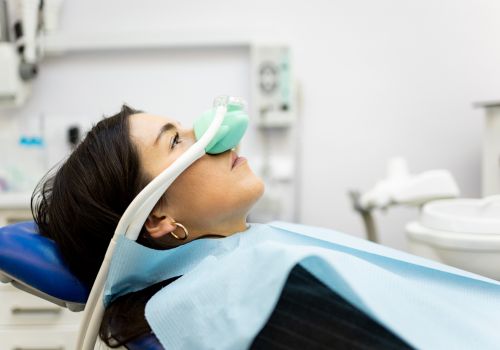Dental anxiety affects millions of people worldwide, creating a vicious cycle where fear prevents necessary care, leading to deteriorating oral health that requires more extensive treatment, which further increases anxiety. This widespread issue is one of the most significant barriers to preventive dental care, yet it remains largely unaddressed in many practices. As dental professionals, we’re here to explain how dental anxiety impacts oral health and share tips for overcoming your fear of seeing the dentist.
The Scope of Dental Anxiety
Research reveals that dental anxiety affects between 15-20% of the population, with severe dental phobia impacting a slightly smaller percentage of adults. These numbers translate to millions of people who avoid dental care, often enduring pain and discomfort rather than seeking treatment. Women report higher rates of dental anxiety than men, and the condition frequently develops during childhood or adolescence following traumatic dental experiences.
The psychological impact goes beyond the dental chair, though. People with dental anxiety often experience anticipatory stress days or weeks before appointments, affecting their sleep, concentration, and overall well-being. Many report feeling embarrassed about their fear, which compounds the problem and prevents them from seeking help.
The Hidden Costs of Avoidance
When patients avoid routine dental care due to anxiety, the consequences quickly compound. What begins as a simple need for a dental cleaning can escalate into problems requiring complex intervention within a matter of months. As a result, individuals with dental anxiety are substantially more likely to have missing teeth or experience dental pain compared to those who receive regular care.
The financial implications are staggering. Emergency dental visits cost significantly more than preventive care, and patients often require extensive treatment when they finally seek help. Research indicates that people who avoid routine care spend over 40% more on dental treatment throughout their lifetime compared to those who maintain regular visits.
Beyond individual health, dental anxiety also creates broader public health challenges. Poor oral health is linked directly to cardiovascular disease, diabetes complications, and respiratory infections. When large populations avoid dental care due to fear, community health outcomes suffer as a result.
Evidence-Based Interventions That Work
Cognitive Behavioral Therapy
Multiple studies demonstrate the effectiveness of cognitive behavioral therapy (CBT) for dental anxiety. This type of therapy works by helping patients identify and challenge irrational thoughts about dental treatment, while also teaching them practical coping strategies.
As dental professionals, we can incorporate basic CBT principles into our patient interactions. Simple techniques include helping patients recognize catastrophic thinking patterns, teaching breathing exercises, and gradually exposing them to dental stimuli in a controlled, supportive environment.
Sedation Dentistry

Scientific evidence supports various sedation methods for managing dental anxiety. Nitrous oxide (laughing gas) provides mild sedation while allowing patients to remain conscious and responsive. Studies show that most anxious patients report feeling more comfortable with nitrous oxide, and the method has an excellent safety profile.
Oral sedation using benzodiazepines offers moderate anxiety relief for longer procedures. Research indicates that oral sedation significantly increases treatment acceptance rates among highly anxious patients. Intravenous sedation provides the deepest level of conscious sedation, offering the highest success rates for severe dental phobia cases.
Communication Techniques
Effective communication also serves as a powerful tool for overcoming dental anxiety.
Effective communication strategies include:
- Explaining procedures before beginning
- Using non-threatening language
- Providing patients with control signals
- Offering frequent reassurance during treatment
- Checking in regularly about comfort levels
Innovative Approaches to Fear Reduction
Virtual Reality Technology
Virtual reality is a breakthrough in managing dental anxiety. VR distraction during dental procedures reduces anxiety scores by 30-40% compared to traditional distraction methods. Patients wearing VR headsets report feeling transported away from the clinical environment, effectively breaking the association between dental offices and fear.
Several dental practices now offer VR experiences ranging from peaceful nature scenes to engaging games. The technology works well for routine procedures, such as cleanings and fillings, where patients can immerse themselves in calming virtual environments.
Aromatherapy and Environmental Modifications
Emerging research suggests that the use of specific scents can help reduce dental anxiety. Lavender aromatherapy decreases cortisol levels and reported anxiety scores during dental treatment. Orange and vanilla scents also show promise in creating more calming clinical environments.
Environmental modifications extend beyond scents. Natural lighting, comfortable seating in waiting areas, and calming background music all contribute to reduced patient anxiety. Some practices have redesigned their spaces to resemble spas, resulting in measurable improvements in patient comfort levels.
Mindfulness and Relaxation Techniques
Mindfulness-based interventions show significant promise for dental anxiety management. Research demonstrates that patients who practice mindfulness meditation before dental appointments experience less anxiety and report higher satisfaction with their care. Progressive muscle relaxation techniques are also effective, particularly when taught and practiced prior to treatment.
How Dentists Build Trust Through Patient-Centered Care
Trust is the foundation of successful anxiety management in dental settings. Patients with dental anxiety often have histories of negative dental experiences, making trust-building essential for treatment success. Practices that emphasize patient-centered care see dramatic improvements in anxiety management and treatment compliance.

Patient-centered approaches include involving patients in treatment planning decisions, respecting their concerns without dismissing fears, and maintaining transparent communication about procedures and costs. When patients feel heard and respected, their anxiety levels decrease significantly.
Trauma-informed care principles also apply to dental anxiety management. Many patients have experienced medical trauma outside of dentistry, requiring sensitivity and understanding from the entire team. Training dental staff to recognize signs of trauma and respond appropriately creates safer, more welcoming environments for anxious patients.
Wrapping Up
Managing dental anxiety requires a multifaceted approach combining evidence-based interventions with compassionate care. The most successful practices develop comprehensive anxiety management protocols that address individual patient needs while maintaining efficiency.
Dental anxiety doesn’t have to be a permanent barrier to oral health. With proper understanding, evidence-based interventions, and genuine compassion, dental professionals can help patients overcome their fears and achieve optimal oral health. Don’t let anxiety prevent you from getting the dental care you need. Schedule an appointment with a dentist who prioritizes patient comfort today. If you have questions and you'd like to reach out to us, you can call us directly at (551) 553-4277, or you can email us at [email protected].

